Awards
Exemplary Ecosystem Initiatives — 2010
Washington State Department of Transportation: Fish Passage Program
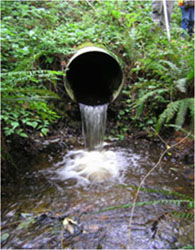
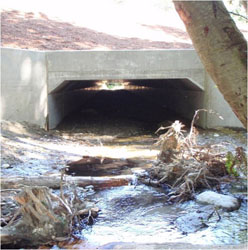
Before and after photos of a fish passage project utilizing the stream simulation
design method that was completed in 2009 on an unnamed tributary to
Squamish Harbor on SR 104 southeast of Port Townsend, Washington.
Source: WSDOT
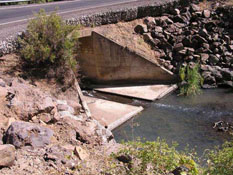
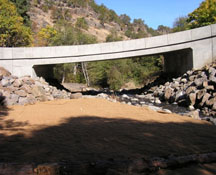
Before and after photos of a fish passage project at Bowman Creek
on SR 142 west of Goldendale, Washington.
Source: WSDOT
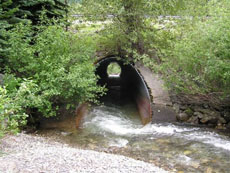
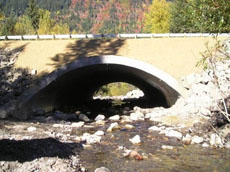
Before and after photos of a fish passage project at Mill Creek on SR 2,
near Stevens Pass Ski Resort in Washington State.
Source: WSDOT
In 1991, the Washington State Department of Transportation (WSDOT) and the Washington State Department of Fish & Wildlife (WDFW) partnered to restore aquatic ecosystems by improving fish passage and stream function at road crossings. In the Pacific Northwest, aquatic populations such as salmon and stream habitat are a natural resource for the region and are indicators of ecosystem integrity.
Adult salmon return to the same freshwater streams where they hatched in order to spawn a new generation. Juvenile salmon spend time in freshwater before they travel downstream to saltwater. Roadway culverts are often an obstacle for adult and juvenile salmon as they make their way upstream from saltwater or as they move within upstream areas to search for food and cover. The culverts are an obstacle because of their high water velocity, varying water depth, and gradient changes that can obstruct fish migration and movement through freshwater.
WSDOT provides funding to WDFW to hire staff responsible for conducting an inventory of fish barriers and correcting existing barriers. Along with stakeholders, the agencies work together to design and implement fish barrier corrections. WSDOT and WDFW use the best available science to understand fish passage needs, habitat utilization, and culvert design. WSDOT contributes funding for fish passage research and developed research partnerships with Battelle Marine Sciences Laboratory, the University of Washington, Washington State University, the Federal Highway Administration, the States of Oregon and Alaska, and the US Forest Service.
In the past, roadway culverts were designed for hydraulic capacity, however, today WSDOT and WDFW develop designs that mimic streamflow. New designs include a wider stream and more gradual gradient that is similar to the natural stream shape. Culvert improvements can include a replacement of the culvert or the installation of a bridge, which also improves ecological function and species movement.
Since the establishment of the Fish Passage Program, staff assessed 6,000 crossings and conducted 236 corrections in both existing culvert corrections and as part of typical highway projects, improving access to over 750 lineal miles of stream habitat.
For more information, contact Paul Wagner, Biology Branch Manager, WSDOT at wagnerp@wsdot.wa.gov.

